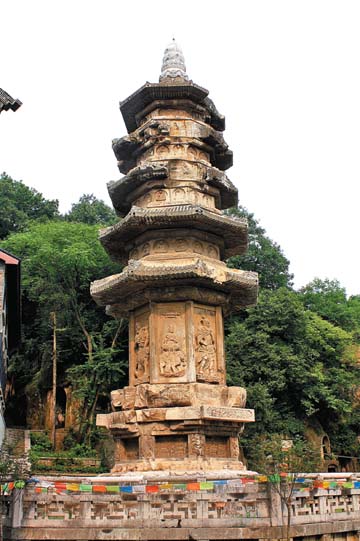 James Baquet HAVING finished with the temples in eastern Anhui, I turned my attention to the temples of Jiangsu. Returning by train from Langya Temple in Chuzhou, I jumped into a taxi at Nanjing Railway Station and made a beeline to Qixia Temple east of Nanjing, arriving by 3:30 or so — just enough time to see the temple before closing. The temple gate actually admits you to a large scenic area, not just the temple itself. I roamed through an archway and past a lake, and between the two huge drum and bell towers, to reach the temple proper. The temple was founded in 489; it currently includes buildings from a restoration in 1908. It’s nice enough, with the usual features: a front hall with the Four Heavenly Kings, the Laughing Buddha, and Weituo; and a main hall with my favorite Buddha, Vairochana. But the real treats are in the back yard. There one finds a stunning pagoda built in the 10th-century stone to replace the wooden one commissioned by Emperor Wen of the Sui Dynasty; it once held one of the 83 portions of Buddhist relics that he divided up and sent all over the country. The pagoda today is a treasure itself, carved with Buddhist figures and standing 18 meters tall. Just beyond the pagoda is another treat. The so-called Thousand Buddhas Cliff (started in 484) has grottoes actually containing 515 statues and 294 shrines. Throughout history, many of the Buddhas have lost their heads. Some have been replaced; others have not. After dining with the monks, I took a slower-but-cheaper local bus back into the city. | 
